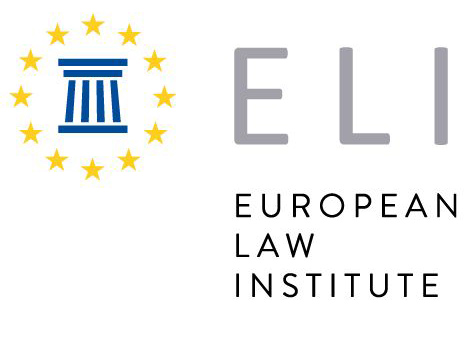On 5 January 2021, ELI submitted a Response to the European Commissions’ Public Consultation on Civil Liability: Adapting Liability Rules to the Digital Age and Artificial Intelligence (AI). The webinar of 27 January sought disseminate the latter, which is available for download here.
On the occasion, ELI President, Prof Dr Pascal Pichonnaz, who chaired the webinar, welcomed participants. He informed those present about ELI and gave an overview of its key activities in the area of AI and product liability, including the Innovation Paper on Guiding Principles for Updating the Product Liability Directive for the Digital Age, the Response to the European Commission’s public consultation on the White Paper: On Artificial Intelligence – A European Approach to Excellence and Trust and the Response to the European Commissions’ Public Consultation on Civil Liability: Adapting Liability Rules to the Digital Age and Artificial Intelligence. President Pichonnaz said he believed that this is an important contribution to the discussion on how the EU could reform the Product Liability Directive and on how it could design other liability regimes in the in light of AI.
Prof Dr Bernhard Koch, who led the discussions, was joined by Prof Dr Christiane Wendehorst and Prof Dr Christian Twigg-Flesner, on the ELI side. They focused, among other things, on the definition of ‘product’, the notions of the ‘producer’, of ‘defect’ and of ‘damage’ as well as on the burden of proof and defences and how to specify and regulate them in the future. With regard to AI in particular, Prof Dr Christiane Wendehorst explained the three possible liability regimes proposed in the ELI Response.
The above was followed by a discussion with representatives of the European Commission, Prof Dr Dirk Staudenmayer, Head of Unit Contract Law, Directorate-General for Justice and Consumers (DG JUST) and Mark Beamish, Legal and Policy Officer, Directorate-General for Internal Market, Industry, Entrepreneurship and SMEs (DG GROW). This included issues such as causation in the case of harm resulting directly or indirectly from the use of AI, examples of particular AI/machine learning instances which might be inherently dangerous by their mere use, for which a strict liability regime might be envisaged (and how to design it), as well as the difference between a reversal of the burden of proof and the recommended presumption of a breach of the duty of care.
Participants were also able to pose questions to the speakers and a lively debate followed, which centered around topics such as the consequences of extending the concept of ‘product’ to software, how to categorise ‘tailor made software’, and liability for AI operations in the context of social security and insurance.
ELI is grateful to all the above for their contributions and also to Prof Dr Jean-Sébastien Borghetti, Prof Dr Piotr Machnikowski and Prof Dr Teresa Rodríguez de las Heras Ballell, all of whom joined the ELI President, Dr Bernhard Koch, Prof Dr Christiane Wendehorst and Prof Dr Christian Twigg-Flesner in drafting the above Response.
The recording of the webinar is available below.

